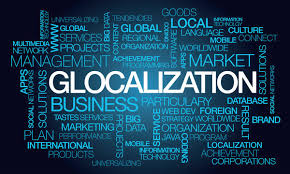CONSUMER BEHAVIOUR
Marketing activity in the modern day makes up a central aspect of social life with branding and advertising influencing consumption and shaping economic, cultural and political identifications of society. Understanding consumer behaviour is essential for marketers in targeting increased product sales as well as understanding the phenomenon of changing markets.
One of important hypothesis in economics and marketing is that economic decisions follow a rational process that enable consumers to maximize their utility given resource constraints of price and cost. Many people however make decisions based rather on their short-sighted judgment than on long-term plans for optimizing utility. Behavioural economics is founded on the claim that human decision process is driven more by emotions as opposed to only rational reasoning.
The recognition that emotions can manage our subconscious reactions to conscious perceptions has led to the need to adopt a more modernist understanding of consumer behaviour as it affects purchase decisions and marketing (Foxall, 2015). This report presents a critique of the traditional understanding of consumer behaviour and discusses how desire may be a more relevant way for marketers to understand contemporary consumer behaviour. Marketers require an understanding of consumer decision making in designing appropriate marketing strategies and promotional messages that would be more effective in influencing purchase decisions.
Background and Statement of the Problem
Customer behaviour is an integral concept in strategic marketing and planning, and is based in the context of consumer buying behaviour. In order to develop a framework for studying consumer behaviour, it is helpful to considering the evolution of the concept in research and marketing discipline. The concept of consumer behaviour emerged during the 1960s as a distinct field of study characterized by two broad paradigms, the positivist and non-positivist.
The positivist paradigm defines consumer behaviour using economic, behavioural, cognitive, motivational, trait or attitudinal and situational perspectives. These are referred to as the traditional perspectives of consumer behaviour and they pave the way for the development of the non-positivist paradigm. Positivism is typical of neoclassical economics that seek to describe and explain economic phenomena without referring to moral and ethical judgements.
The positivist paradigm is still the dominant paradigm explaining consumer behaviour. The traditional positivist perspective takes a utilitarian approach to consumption and emphasizes the supremacy of human reason and rationality in selecting the alternative with the highest utility value. The non-positivist paradigm represents an opposing view to positivist understanding of consumer behaviour.
Non-positivism encompasses the interpretive and postmodern perspectives of consumer behaviour that have emerged more recently after 1980. Non-positivist research into consumer behaviour seeks to arrive at a better understanding of human behaviour as it influences consumption processes and purchase decisions. The non-positivist perspective places greater emphasis on the symbolic dimensions of consumer choice rather than rational economic decision process (Deepa & Murugan, 2015).
Comparing the two perspectives yields a set of paradigms that frame the contrasting view of the postmodernist understanding of consumer behaviour as compared to the traditional understanding. Five dialectics of consumption can be identified in academic and research literature for understanding the contrasting ideas of consumer behaviour in the traditional and the modernist perspectives.
These are materialism versus symbolic consumer culture, the social versus the self, desire versus satisfaction, rationality versus irrationality, and creativity versus constraint (Brosekhan, Velayutham & Phil, 2013). This report will focus on understanding irrational desire in the modernist view as it compares to rational satisfaction in the traditional view of the consumer decision process. The report compares how the two perspectives influence purchasing behaviour and consequently effectiveness of marketing strategy.
Traditional Understanding of Consumer Purchase Behaviour
The traditional understanding of consumer behaviour views the customer as an economic man or rational consumer that is motivated into purchasing by facts, and reasonably considers the facts in making the purchase decision to possessively get the maximal benefit while expending the least work. As identified in classical economic writings, man is entirely rational and self-interested, and makes decisions based upon his ability to maximise utility whilst expending the minimum effort (Jemma, Zwick & Neville, 2016).
The rational consumer theory has become the basis of understanding the customer in the field of marketing and marketing communications. The rational consumer theory is not only applied in economics but is also used in other professional fields to interpret human decisions and actions that result from consumer behaviour following rational choice by the economically-minded man.
In order to make rational purchase decisions, a consumer would have to be aware of all available alternatives for purchase and consumption, and be able to rate each option correctly and select the most favourable alternative. This is however not the case in many decision situations and is no longer accepted as a realistic account of the human decision making process.
As put forward in such theories as the Satisficing Theory by Herbert Simons (1997, 1991), Prospect Theory by Kahneman and Tversky (1979) and other such theories that embrace bounded rationality, individuals are further described as seeking satisfaction rather than pursuing optimum choices (Trandafilovic, Pasic & Perunovic, 2013).
Consumers rarely have adequate market information and lack the motivation and time to make the most perfect decision. As a result, the decision-making process of consumers is often affected by less rational influences such as personal attitudes and perceptions, and social relationships and values (Diglel & Yazdanifard, 2014).
Desire in Contemporary Consumer Behaviour
Recent research studies in consumer behaviour show quite different findings from those expected following a rational man or positivist perspective. Different academic and professional disciplines, primarily in psychology and more recently neurology, have attempted to offer and define the possibility of irrational man in decision situations that supposedly require rational thinking.
The combination of economics and psychology has given rise to “behavioural economics” a scientific field that gives a completely different perspective on consumer behaviour. The field of behavioural economics especially offers an explanation of the various irrational influences that can impact the decision-making process of humans (Cisek et al., 2014).
Although a person is naturally motivated to make effective and rational decisions, humans often confirm their limited willpower and inadequate or incomplete account of information relating to the decision. These necessitate taking into account the other irrational component of the human decision making process, which are composed of different emotions that influence human thought process.
These include the desire for money, fashion and vanity, fear, pride of possession, health and comfort, and love and affection (Kovac, Grubor & Maric, 2016). Irrational elements in many cases exceed the expected rationality as has been proven in many behavioural studies experiments and researches such as McDaniel, Lamb & Hair (2006), Gobe (2006), Dunne (2005), Hanna & Wozniak (2001) and Stewart (1994).
Such studies have shown that emotions are strong psychological processes that get involved in subjective decisions in interpreting experiences of pleasure and displeasure, physiological impression, motor symptoms, and changes in the availability and orientation (Olivera & Kustrak, 2013).
According to recent researches by behavioural science experts including Kotler& Arm-strong (2008), Du Plessis (2007, 1991) and Altman (2006),emotions play an important role in the perception of advertising messages (Trandafilovic, Pasic & Perunovic, 2013). Emotions are called upon and used to assess the facts, events, situations and results of the decision and experience based on the subjective state of mind, and are used to evaluate the relationship that would lead to taking a position on the given purchase decision or marketing situation (Hill & Fombelle, 2013).
They therefore cause and affect other psychological processes including purchasing decisions, and can even cause a paradigm change in a person following an encounter with an advertising message.
Implications for Marketing
Economics is regarded as a non-experimental science that cannot rely on laboratory experiments and utilizes only field observations to arrive at theoretical postulates. In contrast, behavioural economics advocates for controlled experiments as an important part of research for verifying economic theory (Wei & Lu, 2013).In understanding the consumer purchase decisions-process that should be rational following logical and predictable steps, behavioural economics offers a completely different perspective.
In many consumer purchase situations such as insurance, saving, health care, fashion, and employment relationships, some elements of irrational behaviour are evident. The consumer has certain preformed expectations for these products that rational reasoning marketing messages might find impossible to change if the marketing message does not address the emotions and feelings of the customer (Srikant, 2013).
Application of knowledge contained in the postmodern perception of human behaviour has been labelled as neuro-marketing, which offers an alternative way of presenting marketing communication to customers. Behavioural economics applied in marketing deals with incorporating symbolism and stories in a reconstruction of the world in which consumers live.
Irrational factors that influence customer purchase behaviour are derived from human feelings, emotions and other sources in the environment such as class, social image, fashion, heritage and concern for the environment amongst others. Innovative marketing companies are using methods such as environmental awareness and social responsibility to better communicate their brand value (Foxall, 2015; Walz, Hingston & Andehn, 2014).
Instead of focusing on only communicating the rational properties of the product, marketers can offer a story behind the brand that will arouse emotions in the consumer to associate with and purchase the brand. Such an approach offers the opportunity for the customer to become part of the new constructed world by consuming the brand (Lee, Gregg & Park, 2013).
Conclusion
In the contemporary world, consumption, advertising and branding constitute central aspects of social life that continue to shape the economic, cultural and even political identifications of organizations and the people relating with them. Certainly, social and behavioural theory is now focusing on consumption as playing a central role in the way the economic world is constructed. Studying consumer behaviour enables marketers and market researchers to understand and predict how consumers would react to promotional advertising messages, and by extension, why they would make purchase decisions.
Reference list
Brosekhan, Abdul A., Velayutham, Muthu C & Phil, M. (2013). Consumer buying behaviour – a literature review”, IOSR Journal of Business and Management, 08-16. Accessed from http://www.iosrjournals.org/iosr-jbm/papers/ncibppte-volume-1/1014.pdf
Cisek, Sylwia Z., Sedikides, C., Hart, Claire M., Godwin, Hayward J., Benson, V. & Liversedge, Simon P. (2014). “.Narcissism and consumer behaviour –are view and preliminary findings”, Frontiers in Psychology.5 (232). Hypothesis and Theory Article. Accessed from http://eprints.soton.ac.uk/363407/1/__filestore.soton.ac.uk_users_gg_mydocuments_constantine%20publications%20pdf’s_2014_Cisek%20Sedikides%20Hart%20et%20al%20%202014%20Frontiers.pdf
Deepa, N & Murugan, M. (2015). “A study on consumer behaviour towards international brand of home appliances at Vellore city”, CLEAR International Journal of Research in Commerce & Management”, 6(4), 9-11. Accessed from http://web.b.ebscohost.com/abstract?direct=true&profile=ehost&scope=site&authtype=crawler&jrnl=22494561&AN=119728097&h=Y201Vmgm%2f9ZMKnMIVPHBBN3eFJx0GkoMzEB9hDC4Q3AZqbGF9RqNWEBeWSWFcj149P1FTPEEAUlCz87Gom0Yhg%3d%3d&crl=c&resultNs=AdminWebAuth&resultLocal=ErrCrlNotAuth&crlhashurl=login.aspx%3fdirect%3dtrue%26profile%3dehost%26scope%3dsite%26authtype%3dcrawler%26jrnl%3d22494561%26AN%3d119728097
Diglel, Aman & Yazdanifard, Rashad (2014). “Green Marketing: It’s Influence on Buying Behavior and Attitudes of the Purchasers towards Eco-Friendly Products”, Global Journal of Management and Business Research: E Marketing, 14(7). Accessed from https://globaljournals.org/GJMBR_Volume14/2-Green-Marketing-Its-Influence-on-Buying-Behavior.pdf
Foxall, Gordon R. (2015). The Routledge Companion to Consumer Behavior Analysis. Routledge Publishers. Accessed from https://books.google.co.ke/books?id=u8xmCgAAQBAJ&pg=PA19&lpg=PA19&dq=consumer+behaviour+in+marketing+2013+201*&source=bl&ots=p392f1yun-&sig=HUIfNR25OqrLLBikoJv7AuvA3nI&hl=en&sa=X&redir_esc=y#v=onepage&q&f=false
Hill, Krista M. & Fombelle, Paul W. (2013). “The role of curiosity in consumer behavior”, AMA Summer Educators’ Conference Proceedings, 24, 12-23. Accessed from http://connection.ebscohost.com/c/articles/90022196/role-curiosity-consumer-behavior
Jemma, Michal C., Zwick, D. & Neville, B. (2016). “The ideology of the ethical consumption gap”, Marketing Theory, 16(1), 21-38. UK: Sage Publications. Accessed from http://www.gla.ac.uk/media/media_451526_en.pdf
Kovac, Ruzica Z., Grubor, Aleksandar & Maric, Drazen (2016). “Impulsive consumer behavior”, International Journal of Multidisciplinarity in Business and Science, 2(2), 81-89. Accessed from http://hrcak.srce.hr/file/195744
Lee, S.Y., Gregg, A. P. & Park, S.H. (2013). “The person in the purchase: narcissistic consumers prefer products that positively distinguish them”, Journal of Personal and Social Psychology, 05, 335-352. Accessed from https://www.ncbi.nlm.nih.gov/pubmed/23773040
Meenakshi, Kukreja, R. (2016). “Consumer’s behaviour while purchasing apparels in sale period”, Management Dynamics, 16(1), 1-40. Accessed from http://web.b.ebscohost.com/abstract?direct=true&profile=ehost&scope=site&authtype=crawler&jrnl=09725067&AN=118351573&h=e%2fv0AAqK4mrauG2OMxKukfAAZHwsw0ySOFEktaHDWi%2fYu9rHbSIGW64bROUG7PCtedHdRDW4tJkNRnfwzgXFVQ%3d%3d&crl=c&resultNs=AdminWebAuth&resultLocal=ErrCrlNotAuth&crlhashurl=login.aspx%3fdirect%3dtrue%26profile%3dehost%26scope%3dsite%26authtype%3dcrawler%26jrnl%3d09725067%26AN%3d118351573
Olivera, Majic J. & Kustrak, A. (2013). “The influence of religion to consumer behaviour and further implications to international marketing”, International Journal of Management Cases, 15(4), 287-300. Accessed from http://web.b.ebscohost.com/abstract?direct=true&profile=ehost&scope=site&authtype=crawler&jrnl=17416264&AN=89544329&h=b6WPO0iDkHcMPhbyn%2bfxyK5mtMsDPaY%2faFn0q8Mt%2bEuN%2f6w23BY8JWr4bERNntYc3YxtpDgVUTvsi3hCJ1F8aQ%3d%3d&crl=c&resultNs=AdminWebAuth&resultLocal=ErrCrlNotAuth&crlhashurl=login.aspx%3fdirect%3dtrue%26profile%3dehost%26scope%3dsite%26authtype%3dcrawler%26jrnl%3d17416264%26AN%3d89544329
Srikant, Manchiraju (2013). “Materialism in consumer behavior and marketing – are view”, Management and Marketing Challenges for the Knowledge Society, 8(2), 329-352. Accessed from http://www.managementmarketing.ro/pdf/articole/315.pdf
Trandafilovic, I., Pasic, V. &Perunovic, S. (2013). “The research of cognitive and affective behaviour during shopping”, Economics and Organization, 10(2), 147-164. Accessed from http://facta.junis.ni.ac.rs/eao/eao201302/eao201302-05.pdf
Walz, M., Hingston, S. &Andehn, M. (2014). “The magic of ethical brands: interpassivity and the thievish joy of delegated consumption”, Ephemera: Theory and Politics in Organization, 14(1), 57-80. Accessed from http://www.ephemerajournal.org/contribution/magic-ethical-brands-interpassivity-and-thievish-joy-delegated-consumption\
Wei, Pei-Shan & Lu, Hsi-Peng (2013). “An examination of the celebrity endorsements and online customer reviews influence female consumers’ shopping behavior”, Computers in Human Behavior, 29(1), 193-201. Accessed from https://pdfs.semanticscholar.org/bd6b/3ef8cab804823b4ede2c9ceb6118a5dd9f0f.pdf
Want help to write your Essay or Assignments? Click here









